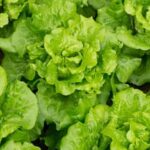Are you looking for a way to make the most of your outdoor space and grow your own fresh produce? One popular solution is roof gardening vegetables. This innovative approach to urban farming allows people to cultivate a variety of vegetables right on their rooftops, making use of previously underutilized space.
Roof gardening vegetables not only provides an opportunity for sustainable living but also offers a range of health benefits from enjoying freshly harvested fruits and vegetables. In this article, we will explore the many advantages of roof gardening, as well as provide practical tips for getting started.
When it comes to growing your own vegetables on the roof, there are several factors to consider. From choosing the right plants that thrive in such conditions to preparing the rooftop for gardening, every step plays a crucial role in the success of your vegetable garden. Join us as we delve into the world of roof gardening and discover how you can create your own urban oasis while reaping the rewards of homegrown produce.
Benefits of Roof Gardening Vegetables
Roof gardening vegetables offer a plethora of benefits for both the environment and the gardener. By growing vegetables on the roof, individuals can take advantage of limited space while also contributing to a greener and more sustainable urban landscape. Here are some of the key benefits of roof gardening vegetables:
- Environmental Benefits:
- Reduces Urban Heat Island Effect: Vegetation on rooftops can significantly lower temperatures in urban areas, reducing the heat island effect and lowering energy consumption for cooling buildings.
- Air Quality Improvement: Plants help absorb carbon dioxide and release oxygen, therefore improving air quality in urban environments.
- Stormwater Management: Rooftop gardens can help reduce stormwater runoff by absorbing water and decreasing the burden on drainage systems.
- Personal Benefits:
- Access to Fresh Produce: Roof gardening vegetables provides access to fresh, homegrown produce without needing a traditional garden plot.
- Stress Reduction: Gardening has been shown to reduce stress and improve mental well-being, providing a peaceful retreat from the hustle and bustle of city life.
- Community Building: Rooftop gardens can bring people together, fostering a sense of community among residents who participate in gardening activities.
- Economic Benefits:
- Energy Savings: The insulation provided by rooftop vegetation can help reduce heating and cooling costs for buildings.
- Property Value Enhancement: Green roofs add aesthetic appeal to properties, potentially increasing their market value.
Overall, roof gardening vegetables not only offers personal satisfaction and economic benefits but also plays a crucial role in promoting environmental sustainability in urban areas. By enjoying these benefits firsthand, individuals can contribute to a healthier and more vibrant city environment while reaping the rewards of their labor.
Choosing the Right Vegetables for Roof Gardening
When it comes to roof gardening vegetables, it is important to choose the right vegetables that thrive in a rooftop environment. Not all vegetables are suitable for growing on a rooftop, so it is important to select the ones that are low-maintenance and can withstand the unique conditions of being grown at an elevated level.
One of the most important factors to consider when choosing vegetables for roof gardening is their adaptability to limited space and container gardening. Vegetables that have compact growth habits and do not require a lot of space to spread out are ideal for rooftop gardens. Some examples of such vegetables include cherry tomatoes, peppers, radishes, lettuce, spinach, and herbs like basil and cilantro.
Additionally, it is crucial to select vegetables that can handle full sun exposure and fluctuating temperatures. Rooftops tend to be hotter than ground-level gardens due to the heat-absorbing properties of buildings and pavement. Therefore, heat-tolerant vegetables such as eggplant, okra, and hot peppers are great choices for rooftop vegetable gardening.
Lastly, considering the weight-bearing capacity of the roof is also essential when choosing vegetables for your rooftop garden. Root crops like carrots, potatoes, and beets may not be suitable for rooftop gardening due to their heavy weight as they grow underground. Instead, opt for lighter-weight options such as leafy greens or shallow-rooted plants.
By carefully selecting the right vegetables for your roof garden, you can ensure a successful and bountiful harvest while making the most of your urban space.
Preparing the Roof for Vegetable Gardening
Before starting a rooftop vegetable garden, it is crucial to ensure that the roof is structurally sound and capable of supporting the weight of the garden. A structural engineer should assess the roof to determine its load-bearing capacity. Additionally, it is essential to check that the roof has proper drainage to prevent water damage. If necessary, install a waterproof membrane and add a protective layer on top to avoid any leaks.
Furthermore, consider the sun exposure on your rooftop when planning your vegetable garden. Most vegetables require at least six hours of direct sunlight each day. Therefore, choose an area on the roof with maximum sun exposure for optimal plant growth. Keep in mind that light-colored surfaces can help reflect light onto rooftop gardens, reducing stress on plants during hot weather.
Moreover, it is important to consult with local authorities and obtain any necessary permits before starting a rooftop vegetable garden. Some jurisdictions have specific regulations regarding rooftop gardening due to safety and environmental considerations. Understanding these regulations will ensure that your rooftop gardening project complies with all legal requirements.
| Important Considerations | Information |
|---|---|
| Structural Assessment | A structural engineer should assess the roof’s load-bearing capacity. |
| Drainage and Waterproofing | Ensure proper drainage and waterproofing to prevent water damage. |
| Sun Exposure | Choose an area with maximum sun exposure for optimal plant growth. |
| Local Regulations | Consult local authorities and obtain necessary permits before starting a rooftop vegetable garden. |
Container Selection and Set-Up
When it comes to roof gardening vegetables, choosing the right containers is crucial for the success of your garden. Here are some tips for selecting and setting up containers for your rooftop vegetable garden:
1. Container Material: When selecting containers for your rooftop vegetable garden, it’s important to choose materials that are lightweight yet durable. Options such as plastic, fiberglass, or composite materials are ideal for rooftop container gardening. These materials are weather-resistant and won’t add unnecessary weight to your rooftop.
2. Size and Depth: The size and depth of your containers will vary depending on the type of vegetables you plan to grow. Deeper containers are necessary for root vegetables like carrots and potatoes, while shallow containers can be used for herbs and salad greens. Consider the space available on your rooftop when deciding on the sizes of your containers.
3. Drainage: Proper drainage is essential for container gardening, especially on a rooftop where excess water can cause damage. Make sure your containers have sufficient drainage holes to prevent waterlogging. Elevating the containers with bricks or blocks can also help improve airflow and drainage.
4. Setup: Once you’ve selected the right containers, it’s time to set them up on your rooftop. Position the containers in a way that maximizes sunlight exposure for your vegetables. Create a layout that allows easy access for watering, maintenance, and harvesting.
By carefully selecting and setting up the right containers for your rooftop vegetable garden, you can create an efficient and productive growing environment for a variety of fresh produce.
Soil and Fertilizer Requirements for Roof Gardening Vegetables
When it comes to roof gardening vegetables, the right soil and fertilizers are crucial for the success of your garden. The limited space and unique conditions of a rooftop environment require special attention to ensure that your vegetables thrive.
Soil Considerations
The type of soil you use for roof gardening vegetables is important as it directly affects the growth and health of your plants. Lightweight, well-draining soil is essential, as it prevents waterlogged conditions that can lead to root rot. Consider using a high-quality potting mix or creating a custom blend with ingredients like perlite, vermiculite, and compost to provide the ideal growing medium for your vegetables.
Fertilizer Needs
Because container-grown plants have limited access to nutrients in the surrounding environment, it’s important to supplement with fertilizers. Choose a balanced, slow-release fertilizer specially formulated for vegetable gardens. Additionally, organic options like compost tea or fish emulsion can provide an extra boost of nutrition while promoting healthy soil structure.
Testing and Adjusting
Regularly testing the pH levels of your soil is essential for identifying any nutrient deficiencies or imbalances. Many vegetables prefer slightly acidic soil, so adjusting the pH may be necessary using products like lime or sulfur. Monitoring your soil’s fertility and making adjustments as needed will help ensure that your roof garden thrives throughout the growing season.
Maintenance Tips for Roof Gardening Vegetables
Maintaining a successful roof garden requires consistent attention and care. Here are some maintenance tips to keep your rooftop vegetable garden thriving.
Watering
One of the most crucial aspects of maintaining a roof garden is proper watering. Since rooftop gardens are exposed to more direct sunlight and wind, they tend to dry out more quickly than traditional gardens. It’s important to water your vegetable plants regularly, especially during hot and sunny days. Consider installing a drip irrigation system or using self-watering containers to ensure consistent moisture levels for your vegetables.
Weeding
Regular weeding is also essential for the health of your rooftop vegetable garden. Keep an eye out for any unwanted plants or weeds that may compete with your vegetables for nutrients and sunlight. Be sure to remove them as soon as you spot them to prevent them from taking over your garden.
Pest Control
Just like traditional gardens, rooftop vegetable gardens are also susceptible to pests such as aphids, caterpillars, and snails. Regularly inspect your plants for any signs of pest infestation and take appropriate measures to control them, such as using organic pesticides or natural pest deterrents.
By following these maintenance tips, you can ensure that your rooftop vegetable garden continues to produce a bountiful harvest throughout the growing season. With proper care and attention, you’ll be able to enjoy fresh, homegrown produce right from your rooftop oasis.
Harvesting and Enjoying the Fruits (And Vegetables) of Your Labor
In conclusion, roof gardening vegetables can be a rewarding and eco-friendly way to grow your own produce, even in urban areas where space is limited. From the initial selection of the right vegetables to preparing the roof and maintaining the garden, there are numerous benefits to this sustainable practice.
One of the key advantages of roof gardening vegetables is the opportunity to have access to fresh, organic produce right at your doorstep. Not only does it promote self-sufficiency, but it also reduces carbon footprint by eliminating the need for transportation and storage of store-bought vegetables. Additionally, roof gardening can contribute to reducing energy costs by providing insulation to buildings and improving air quality.
When choosing the right vegetables for roof gardening, it’s important to consider factors such as sunlight exposure, wind protection, and weight restrictions. With proper container selection, soil preparation, and maintenance practices in place, anyone can enjoy a bountiful harvest of delicious home-grown vegetables. Furthermore, with careful planning and dedication, you can truly enjoy the fruits (and vegetables) of your labor while making a positive impact on both your health and the environment through roof gardening vegetables.
Frequently Asked Questions
Can I Grow Vegetables on My Roof?
Yes, you can definitely grow vegetables on your roof. Rooftop gardens have become increasingly popular as an option for urban dwellers who want to cultivate their own produce and make use of otherwise unused space.
What Plants Can Grow on a Rooftop Garden?
A variety of plants can thrive in a rooftop garden, including herbs like basil, mint, and cilantro, as well as vegetables such as tomatoes, peppers, and lettuce. Additionally, some fruits like strawberries and blueberries can also be grown successfully in this environment.
What Is a Garden That Is Grown on a Roof?
A garden that is grown on a roof is commonly referred to as a rooftop garden. This type of garden allows people to utilize the space on top of buildings for growing plants, which has environmental benefits such as reducing urban heat island effect and improving air quality.
It also provides a serene and beautiful outdoor space for building inhabitants to enjoy.

If you’re looking to get into vegetable gardening, or are just looking for some tips on how to make your current garden better, then you’ve come to the right place! My name is Ethel and I have been gardening for years. In this blog, I’m going to share with you some of my best tips on how to create a successful vegetable garden.





